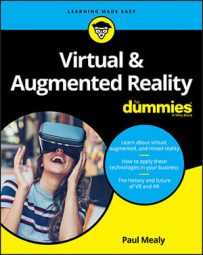VR is further ahead in its product development life cycle than AR. It has seen hardware releases directly to the mass consumer market, and many headset manufacturers have released their plans for the second generation of VR devices. The first generation of VR devices, especially the high-end devices, have been lauded by critics and consumers for the level of immersive experience they can provide. However, adoption by consumers was focused far more on the lower-end VR devices, due in part to high costs and the newness of the technology. That has yet to dull manufacturers’ push for VR adoption. At the Oculus Connect conference in October 2017, Facebook CEO Mark Zuckerberg said, “We’re setting a goal: We want to get a billion people in virtual reality.” A lofty goal. Only time will tell if such a goal is truly attainable, but many experts see VR as having the potential to hit mass adoption levels within the next two to five years.
AR is trending behind VR. The technological challenges of augmenting real-world environments are many: realistic digital display, comfortable wearable computing power, world-sensing technology, and so on. And AR needs to be able to handle all these potential speed bumps at a price attainable for consumers in order to hit mass adoption numbers. But like VR, AR has its share of advocates in high places. “We believe augmented reality is going to change the way we use technology forever,” claimed Apple CEO Tim Cook in a 2017 call with analysts. “We’re already seeing things that will transform the way you work, play, connect, and learn. Augmented reality is going to change everything.”
With the challenges AR faces, technology research predictions put AR’s adoption level further out than that of VR. Most analysts see AR’s mainstream adoption somewhere between five to ten years out. In the meantime, however, many expect to see AR make large inroads into enterprise sectors such as industrial and commercial industries, where utilizing AR promises to save industries time and money by minimizing costly errors and mistakes.
No one knows for sure just how big the VR and AR markets will be, but many research firms predict a combined market cap of up to $150 billion for VR and AR by 2021, potentially with AR leading the way — an interesting development for a technology that started “behind” VR.
No one can predict just how explosive growth for VR and AR will be, but the future of both these technologies appears promising.

